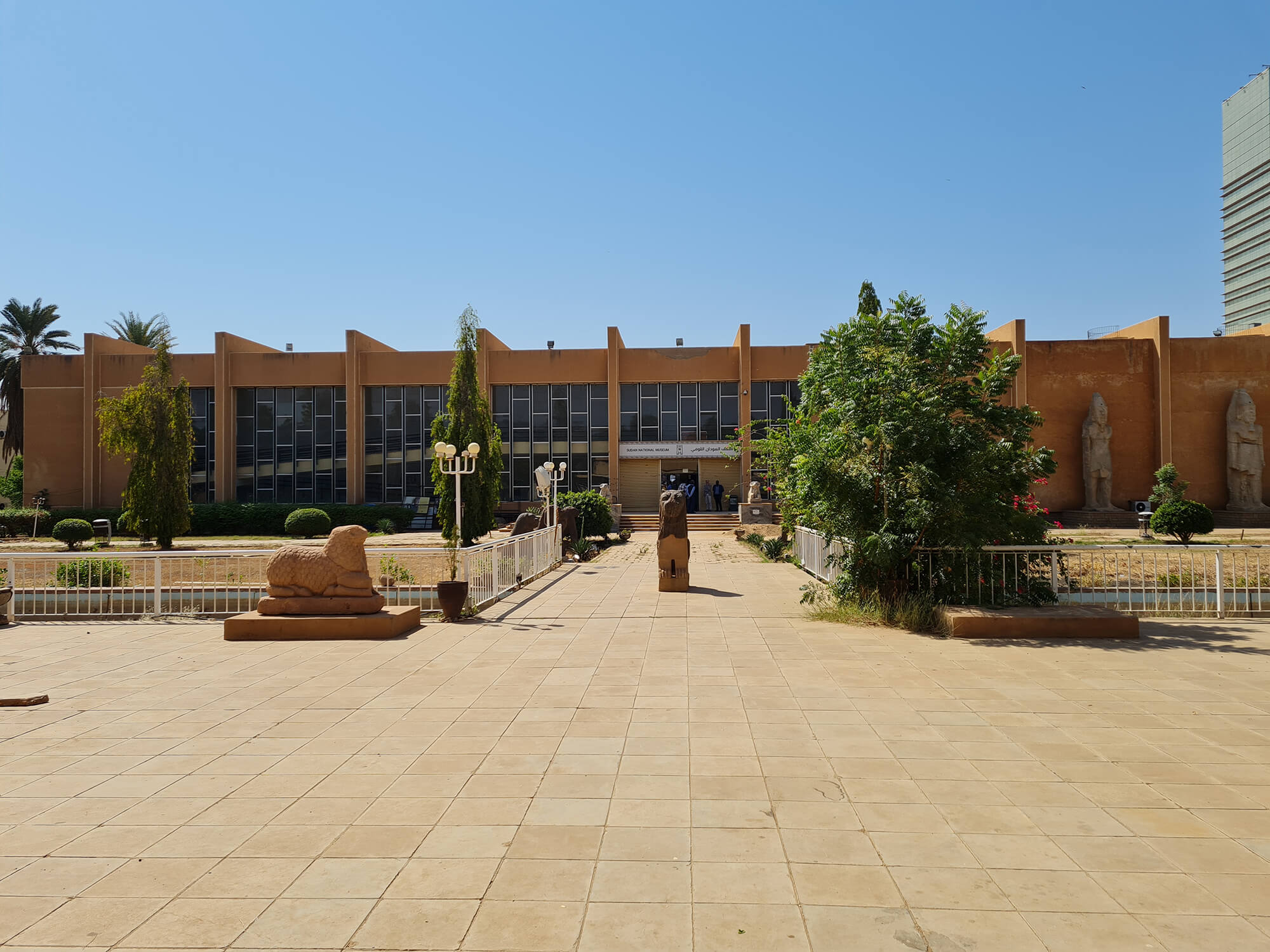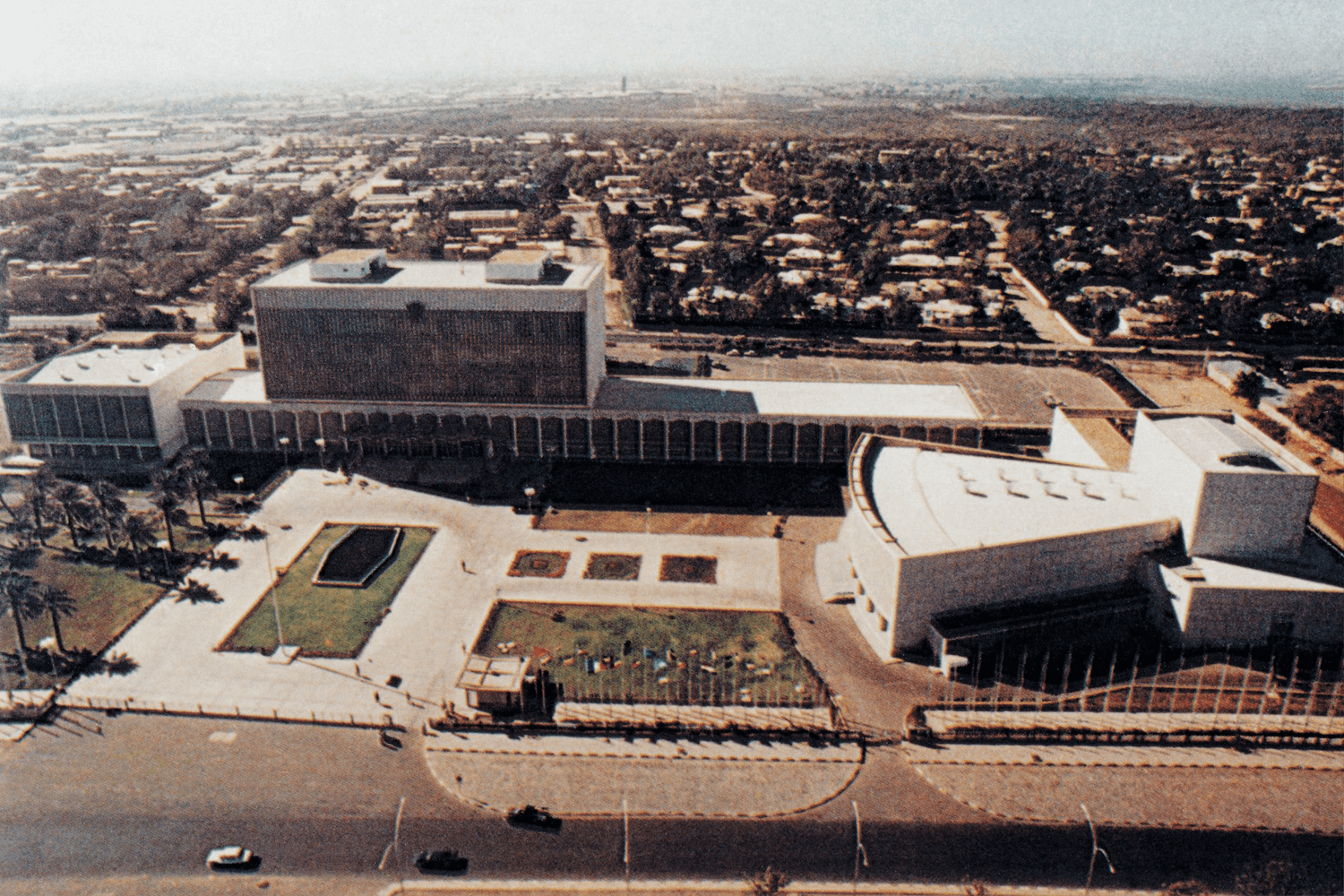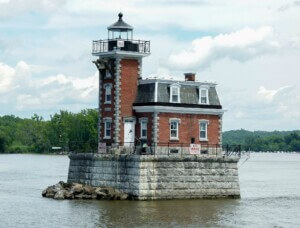Mohieldin Gamal is a Sudanese architect, studio tutor, and researcher currently based in Cairo. In 2019 he cofounded a group called Modern Sudan Collective and Docomomo’s Sudan chapter; both are dedicated to preserving modern architecture in Khartoum and throughout the country.
Gamal, an instructor at the University of Khartoum, was forced to flee Sudan’s capital last May after fighting between warring factions broke out. As of November 2023, it’s estimated that approximately 10,000 people have been killed in the civil war just in the past six months. AN spoke with Gamal about Sudan’s 2019 revolution; post-revolutionary Sudanese art, architecture, and film; and how Khartoum modernism is threatened by war.
AN: You moved back to Khartoum in 2021. What was it like there after the revolution?
Mohieldin Gamal: To explain how significant 2019 was, you need to know how bad it was in Sudan between 1989 and 2019. Sudan’s history is quite complicated. To keep it short, the past three decades have been a tough, tough time. Sudan had a quite repressive regime that stifled the arts, even history. The regime rewrote the school books and infiltrated everything from unions to universities. It was a quite hard grip. Many people left Sudan in the early 1990s to escape torture and imprisonment.
I studied in the U.K. and worked in London for about ten years. I decided to move back to Sudan for a few reasons, being closer to family among them. Also, after the revolution, things were upbeat and optimistic. Not economically, but culturally. The country was basically closed for thirty years during the dictatorship. So after 2019, it felt like a normal country for a change.
AN: How did Modern Sudan Collective start?
MG: When 2019 happened, the dictatorship’s repression was released, and people started revisiting Sudan’s history, particularly its ancient Nubian history. One of the reasons we started Modern Sudan Collective and a Docomomo chapter in Sudan was that we felt as people were rediscovering our old history, we wanted to learn more about our recent history, which is closely tied to independence. We found that there were many untold stories that needed writing.

At Modern Sudan Collective, we studied about 10 to 15 buildings from Sudan’s modern period. Every building after independence has a story to tell, whether in regard to national identity or international relations, or even local histories. This is what we were interested in as a collective. Instead of exploring Sudanese identity and locality by looking at its older buildings, we were interested in the heroes of modernism. We were studying how people expressed their times through that style.
AN: Why were young people in Khartoum so interested in revisiting modernism?
MG: The arts associated with the 2019 revolution were primarily in the fields of visual art, poetry, and music. Artists looked to the mid- and late-20th century for guidance, rediscovering pieces from two previous successful uprisings. Architecture is a slower, more esoteric art form, but it can respond to such events. Within the context of a renewed interest in history, national identity, and civic participation, we wanted to tell the story of the Sudanese state as written in its cities.
AN: This was common in the 20th century. In the 1960s, many artists looked at the 1920s for inspiration and guidance.
MG: Exactly. More recently, amazing things have been happening in Sudanese film. One movie that’s making the rounds these days is called Goodbye, Julia. Another is You Will Die at 20.
Under Omar al-Bashir’s dictatorship, film was stifled. But before then, in the 1960s, ’70s, and ’80s, there were masterpieces being made. Sudan had many cinemas. People used them for films, concerts, and lectures. A cinema in the town of Kosti was restored recently, and it’s an important cultural location. Another amazing piece is called Talking About Trees, which follows filmmakers who return to Sudan after being exiled. It follows them trying to restore a cinema that was built in the mid-20th century.

AN: Which Sudanese modernists did you study?
MG: Khartoum’s first school of architecture was established in 1957, one year after achieving independence. The first professor there was a modernist, so most students grew up in that culture. Abdel-Moneim Mustafa is probably the best known Sudanese modernist. There were also many foreign architects doing projects in Khartoum, and many Sudanese architects studied overseas in the modern tradition, one of whom was Abdel-Moneim Mustafa.
This was when what’s called the Tropical School of Architecture was taking off. Some of the early cohorts of the school of architecture in Khartoum included El Amin Muddather and Abdulla Sabbar, whose buildings we studied and you can read about. The office of Austrian architect Alexandre O. Petermuller was based in Khartoum for many years and was responsible for the design of several banks and university and industrial buildings.
AN: Which countries aided in Sudan’s development after independence?
MG: After independence, Sudan’s government was at times a bit left-leaning, but it also had relations with the West and capitalism. China had a presence in Sudan and so too did Romania and North Korea. Chinese architects designed and built Khartoum’s Friendship Hall, and the Youth Palace was a gift from North Korea. Another really interesting project is the National Parliament building by the celebrated architect Cezar Lazarescu which resulted from an agreement with Romania’s Nicolae Ceausescu.


Many projects were also undertaken with international organizations and bilateral agreements. The 1970s saw a lot of cooperation with Arab states, and buildings such as the Sudanese Kuwaiti Centre, the Arab Authority for Agricultural Investment and Development (AAAID), and the Arab Bank for Economic Development in Africa were planned in this period. The National Museum was also built with the help of UNESCO following the construction of the Aswan High Dam in Egypt, which flooded a part of Northern Sudan. Are you familiar with that project?
AN: No, I’ve never heard of it.
MG: The dam was built in 1964. Its construction marked the first time that archaeologists were very active in the area. In short, they discovered a lot. They found the origin of civilization in a part of the world known as Nubia. They also found whole temples that were eventually moved from the site, out of the floodplain into the National Museum. This was where UNESCO’s World Heritage List started, with that dam’s construction.
AN: You’ve been in Cairo since May. How have Modern Sudan Collective’s priorities changed after the civil war?
MG: Actually, it is worth noting that our priorities had to change right from the beginning, due to the October 2021 coup d’etat which made mobility around Khartoum difficult. We had plans to undertake walking tours, building surveys, and photography. Instead, our activities ended up being more online, like gathering research that had already happened. After some normality returned, we ran a photography competition. But it was still difficult to access many governmental buildings, for example. We were also unable to register officially as registration of new nonprofit organizations was on hold due to ongoing investigations over huge amounts of fraud during the former regime’s rule.

After the war started, our activities had to stop completely for several months while people were fleeing, finding safety, jobs, etc. We had plans to hold an exhibition in August, which would have been our first in-person event, but that obviously got canceled. We are now simply working on desktop research, contributing to books, and undertaking some heritage monitoring. In terms of reconstruction, I am aware of some groups that have set up to discuss this. However, with no end to the war in sight, this remains largely hypothetical at the moment.
AN: Have any buildings on Modern Sudan Collective’s heritage map been impacted?
MG: Yes. Admittedly, we have been a bit slow on uploading the data we have. The buildings we are aware of include, in no particular order, the Sudan National Museum. There’s also damage to the enclosures of the Temple of Buhen and Temple of Akasha. There’s been extensive fire damage to the Arab Authority for Agricultural Development and Investment, the Sudanese Kuwaiti Centre, and Khartoum Towers. There’s been damage to the Ministry of Finance building; Republican Palace; All Saints Cathedral, which is now the Republican Palace Museum. Note that these are just the buildings that fall under our “remit”; there is plenty of damage to other buildings which are older or newer than our area of study.











